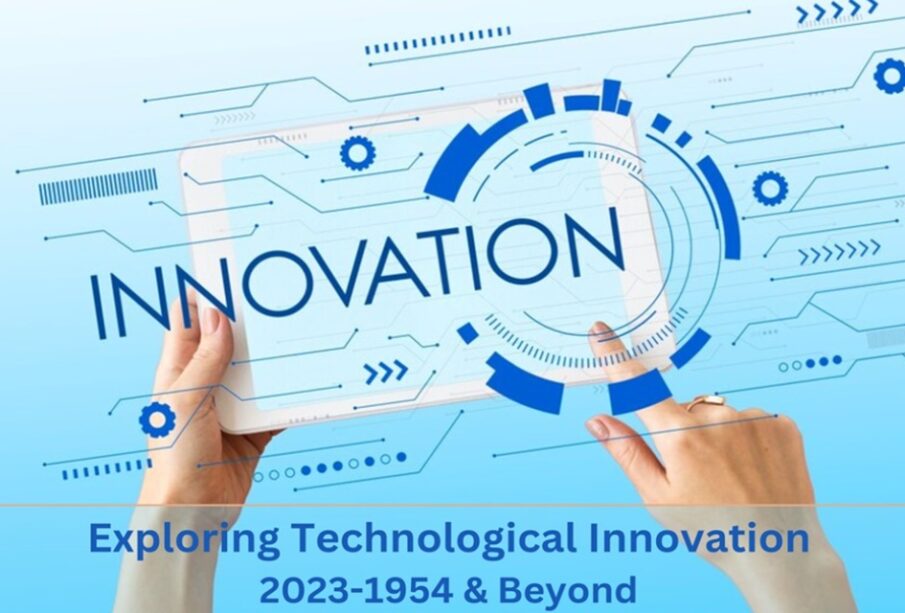A Journey Through Technological Innovations: 2023-1954

The journey of technological innovations from 2023 to 1954 showcases human ingenuity and progress. This period witnessed groundbreaking developments that reshaped industries, economies, and societies. Each decade brought transformative changes, from the advent of the transistor to the rise of artificial intelligence. In this article, we explore the key technological milestones of this era, emphasizing the latest developments.
Technological Innovations By Decade (2023-1954)
| Decade | Key Innovations |
| 1950s | Transistor, Integrated Circuit |
| 1960s | Space Race & Satellites, Mainframe Computers |
| 1970s | Microprocessors, ARPANET |
| 1980s | Personal Computers, Internet Technologies |
| 1990s | World Wide Web, Mobile Phones |
| 2000s | Broadband & Wi-Fi, Smartphones |
| 2010s | Artificial Intelligence, Big Data & Cloud Computing |
| 2020s | Quantum Computing, 5G & IoT, Biotechnology & Healthcare |
1950s: The Birth Of Modern Electronics
- Transistor Revolution (1954): Invented in the 1950s, the transistor replaced bulky vacuum tubes, enabling the miniaturization of electronic circuits and laying the foundation for the digital age.
- Development of the Integrated Circuit (1958): Independently developed by Jack Kilby and Robert Noyce, the integrated circuit combined multiple transistors on a single chip, significantly reducing device size and cost, fueling the growth of consumer electronics and the semiconductor industry.
1960s: Space Exploration & Computer Advancements
- Space Race and Satellite Technology: Defined by the competition between the US and Soviet Union, achievements like the launch of Sputnik in 1957 and the Apollo moon landing in 1969 spurred satellite technology, transforming communication, weather forecasting, and navigation.
- Mainframe Computers: Led by companies like IBM, mainframe computers became pivotal for governments, corporations, and research institutions, marking widespread computerization.
1970s: The Dawn Of Personal Computing
- Microprocessors (1971): Intel’s invention of the microprocessor revolutionized computing, facilitating the birth of personal computers (PCs) like the Altair 8800 in 1975, heralding the PC era.
- Advances in Networking: ARPANET, developed in the late 1960s, laid the groundwork for modern networking, envisioning a global network of interconnected computers.
1980s: The PC Revolution & The Internet
- Personal Computers: The mass adoption of PCs, exemplified by the IBM PC and Apple Macintosh, has integrated them into daily life with software for productivity, education, and entertainment.
- Emergence of the Internet: The development of key Internet technologies, such as the Domain Name System (DNS) and the World Wide Web, set the stage for its explosive growth in subsequent decades.
1990s: The Digital Age
- World Wide Web (1991): Tim Berners-Lee’s creation of the World Wide Web transformed it from a niche research tool into a global information network, facilitating easy navigation and access to information.
- Mobile Phones: Transition from analog to digital mobile phones, propelled by the GSM standard, democratized global mobile communication.
2000s: The Information Age
- Broadband Internet and Wi-Fi: Widespread adoption enabled faster, more reliable internet access, fueling growth in online services, social media, and e-commerce.
- Smartphones (2007): Apple’s iPhone revolutionized mobile technology by integrating phone, computer, and camera capabilities into a single device, spawning a vast ecosystem of mobile apps.
2010s: The Rise of Artificial Intelligence & Big Data
- Artificial Intelligence (AI): Significant advancements in AI and machine learning permeated sectors like healthcare, finance, and transportation, with innovations in natural language processing, computer vision, and autonomous systems.
- Big Data and Cloud Computing: Explosion in digital data led to big data analytics, supported by scalable cloud platforms like AWS and Azure, driving business insights and innovation.
2020s: The Era Of Advanced Technologies
- Quantum Computing: Advancements in quantum mechanics led to rapid progress in quantum computing, promising breakthroughs in cryptography, material science, and drug discovery.
- 5G and the Internet of Things (IoT): 5G networks revolutionized wireless communication, enabling faster speeds and capacity, fueling IoT growth across smart homes, cities, and industries.
- Renewable Energy and Sustainability: Innovations in solar, wind, and battery technologies addressed climate change, supported by smart grids and energy storage solutions for stable, reliable renewable energy.
- Biotechnology and Healthcare: The COVID-19 pandemic accelerated biotechnological breakthroughs, notably mRNA vaccine technology, alongside telemedicine, wearables, and personalized medicine innovations.
- Artificial Intelligence and Machine Learning: AI continued to evolve, enhancing supply chains, cybersecurity, and autonomous vehicles, with advancements in natural language processing models like OpenAI’s GPT-4.
- Space Exploration and Commercialization: Private companies like SpaceX and Blue Origin led space missions, including satellite constellations like Starlink for global internet coverage, bridging digital divides.
Conclusion
From the transistor to quantum computing, each innovation from 1954 to 2023 has reshaped our world, driving progress and opening new possibilities. As technology advances, the pace of change accelerates, promising more transformative developments in the future.
FAQs
What are some key technological innovations from the 1950s to the 2020s?
The innovations include the transistor and integrated circuit in the 1950s, to artificial intelligence and quantum computing in the 2020s, reshaping how we live and work.
How did the internet evolve from its beginnings in the 1980s?
Starting with basic internet protocols in the 1980s, developments like the World Wide Web in the 1990s transformed the internet into a global information network.
What impact did mobile technology have on society from the 1990s onward?
The transition to digital mobile phones and the introduction of smartphones in the 2000s revolutionized communication, entertainment, and everyday life, ushering in the era of mobile computing.








